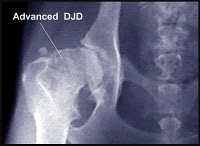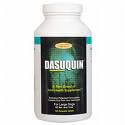
The joints of large to medium-sized dogs do not finish developing until the animal is nearly two years old. Frequent pounding and excessive wear on immature joints can cause malformations leading to abnormal movement. Abnormal movement in a joint is what causes arthritis--which is something we like to avoid in our pets!

Even if your dog is fully-grown, running on pavement will still apply unhealthy force on the joints. Just as most of us would not go out for a jog barefoot, why should we expect our dogs to run without their own Nikes on? Joints only have so many miles in them before the cartilage starts wearing down and degenerative joint disease takes over, creating arthritis. When you make a habit of running long distances with your dog, this wear and tear occurs much earlier in life than it would normally, resulting in chronic pain for your pup.
Heat stroke is another concern. It is extremely easy for a dog to overheat, which can quickly become fatal, even with aggressive treatment. Dogs have only two ways to cool down: by panting and through their paw pads. Hot, humid weather makes panting more difficult for your dog, thus limiting heat loss. Warm pavement keeps your dog’s paws hot, so they are less able to perform their cooling function.
Still, the combination of splendid weather and an energetic canine can make it awfully tempting to hit the road running. If you absolutely can’t resist taking your dog for a jog, here are some tips for minimizing damage and keeping things as safe as possible for your pet:
• Wait until your dog’s joints are fully developed. This means two years or older in a larger breed dog.
• When you do start jogging together, keep the distances short and try to stay on grass or dirt paths to decrease the amount of force applied to the joints.

• Consider starting your dog on supplements to help protect her joints. I strongly recommend Dasuquin, a veterinary glucosamine and chondroitin supplement with avocado extract that has been clinically proven to maintain cartilage heath. Also the miraculous omega-3 fatty acids in fish oil capsules will help repair damaged tissue and decrease inflammation.
Heat stroke is another concern. It is extremely easy for a dog to overheat, which can quickly become fatal, even with aggressive treatment. Dogs have only two ways to cool down: by panting and through their paw pads. Hot, humid weather makes panting more difficult for your dog, thus limiting heat loss. Warm pavement keeps your dog’s paws hot, so they are less able to perform their cooling function.
Still, the combination of splendid weather and an energetic canine can make it awfully tempting to hit the road running. If you absolutely can’t resist taking your dog for a jog, here are some tips for minimizing damage and keeping things as safe as possible for your pet:
• Wait until your dog’s joints are fully developed. This means two years or older in a larger breed dog.
• When you do start jogging together, keep the distances short and try to stay on grass or dirt paths to decrease the amount of force applied to the joints.

• Consider starting your dog on supplements to help protect her joints. I strongly recommend Dasuquin, a veterinary glucosamine and chondroitin supplement with avocado extract that has been clinically proven to maintain cartilage heath. Also the miraculous omega-3 fatty acids in fish oil capsules will help repair damaged tissue and decrease inflammation.








No comments:
Post a Comment